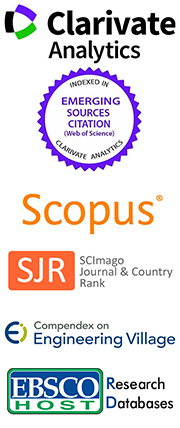An Investigation of Internationally Transferred Mitigation Outcomes (ITMOs) on GHG Emissions Reduction in Thailand’s NDC
Abstract
Keywords
Full Text:
PDFReferences
UNEP/GRID-Geneva. 2023. Climate Change, Retrieved January 29, 2025, from the World Wide Web: https://dicf.unepgrid.ch/thailand/climate-change
UNFCCC. 2022. Thailand's 2nd Updated Nationally Determined Contribution, Retrieved January 29, 2025 from the World Wide Web: https://unfccc.int/sites/default/files/NDC/2022-11/Thailand%202nd%20Updated%20NDC.pdf
ONEP. 2022. Thailand's Long-Term Low Greenhouse Gas Emission Development Strategy (Revised version), Retrieved January 29, 2025 from the World Wide Web: https://unfccc.int/documents/622276
GIZ., 2022. Technical Results from Tasks 1 – 3: The revision and update of Thailand’s Long-Term Low Greenhouse Gas Emission Development Strategy (LT-LEDS) and Thailand’s National Determined Contribution (NDC).
DCCE., 2024. NDC Action Plan on Mitigation 2021 - 2030. Department of Climate Change and Environment, Ministry of Natural Resources and Environment.
DCCE. 2024. Thailand. 2024 Biennial Transparency Report (BTR). BTR1. Retrieved January 29, 2025, from the World Wide Web: https://unfccc.int/documents/645098
TGO., 2023. The Study of GHG Mitigation Potential and Technology Selection Criteria According to JCM Cooperation Framework to Support Carbon Neutrality.
TGO. 2016. What is JCM?, Retrieved June 16, 2016 from the World Wide Web: https://ghgreduction.tgo.or.th/th/about-jcm.html.
GEC. 2022. Overview of the Joint Crediting Mechanism (JCM). Retrieved 2022 from World Wide Web: https://gec.jp/jcm/about/
Jansa P., Pita P., Misila P., Winyuchakrit P. and Limmeechokchai B., 2024. A Multicriteria Decision Analysis to Selection of Low-carbon Emitting Technologies under Joint Crediting Mechanism for Thailand’s Carbon Neutrality 2050. 2024 International Conference on Sustainable Energy: Energy Transition and Net-Zero Climate Future (ICUE 2024). Pattaya City, Thailand.
Ministry of the Environment, Japan. 2021. Credit Allocation Adjustment for the JCM Model Projects Starting from FY2021.
TGO. 2022. Project of Thailand that has been funded. Retrieved 2022 from the World Wide Web: https://ghgreduction.tgo.or.th/th/statistics-jcm/jcm-model-project.html
TGO. 2022. Projects that have been registered/certified for carbon credits. Retrieved 2022 from the World Wide Web: https://ghgreduction.tgo.or.th/th/statistics-jcm/jcm-registered-project.html
Aruga K., 2010. Report on AIM/Enduse Model. Tsukuba, Japan: Economy and Environment Group, Institute for Global Environmental Strategies (IGES).
Oshiro K., Masui T. and Kainuma M., 2017. Quantitative Analysis of Japan’s 2030 Target Based on AIM/CGE and AIM/Enduse. In Post-2020 Climate Action (pp. 143-156).
DEDE., 2020. Thailand Energy Balance 2020. Bangkok, Thailand: Department of Alternative Energy Development and Efficiency, Ministry of Energy.
IEA. 2020. Projected Costs of Generating Electricity 2020. Retrieved 2020 from the World Wide Web: https://www.iea.org/reports/projected-costs-of-generating-electricity-2020
IRENA., 2020. Renewable Power Generation Costs in 2019. Abu Dhabi: International Renewable Energy Agency.
IEA. 2022. World Energy Outlook 2022. Retrieved 2022 from the World Wide Web: https://www.iea.org/reports/world-energy-outlook-2022
IEA. 2021. World Energy Outlook 2021. Retrieved 2021 from the World Wide Web: https://www.iea.org/reports/world-energy-outlook-2021.
DOI: https://doi.org/10.64289/iej.25.0206.3488007


